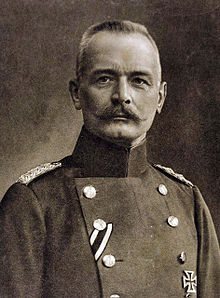War has always produced poetry, traditionally paeans to courage, honor and self-sacrifice and celebrations of the warrior fighting and perhaps dying nobly and the soldier giving his life for his country. The Great War initially produced such sentiments, and perhaps the best remembered English language poem of the war is In Flanders Fields by John McCrae, a Canadian physician, who composed the verse on 3 May 1915 in memory of a friend who had died at the Second Battle of Ypres. (McCrae himself died of influenza in 1918.) The poem succinctly captures two traditional aspects of war poetry: the honored dead and the sense of mission, now to be carried on by others, that brought them to the grave.
In Flanders fields the poppies blow
Between the crosses, row on row,
That mark our place; and in the sky
The larks, still bravely singing, fly
Scarce heard amid the guns below.
We are the Dead. Short days ago
We lived, felt dawn, saw sunset glow,
Loved and were loved, and now we lie,
In Flanders fields.
Take up our quarrel with the foe:
To you from failing hands we throw
The torch; be yours to hold it high.
If ye break faith with us who die
We shall not sleep, though poppies grow
In Flanders fields.
But the Great War was unlike any previous conflict in history. Firearms and cannon, the weapons of industry, had been present for centuries, but this was the first truly industrialized war. Traditionally, the hideous face of war – the disemboweled men, the stinking bodies, the maimed survivors – had generally been ignored in favor of those noble qualities associated with men facing death. Twentieth century weaponry blew away this romantic mantle.
It was now extremely difficult to ignore the utter horror and to see anything at all heroic in the mega-death of the trench lines. You no longer died on a field of green, exhorting your comrades with your last breath and confident you would be celebrated by them. Now you died in the mud, choking on the gas or shredded by shrapnel. Now you were incinerated or blown into nothing or buried alive by the artillery. Now your comrades might never find you and were in any case likely to soon be casualties themselves.
And by 1916 the seeming pointlessness of it all, the sacrifice of thousands for a few yards of ground in a struggle that appeared to have no end, was wearing away old notions of glory and patriotism. Even Rudyard Kipling, whose son John was killed at Loos in September 1915, had doubts, writing the epitaph “If any question why we died/ Tell them, because our fathers lied.”
At the beginning of the conflict the age-old sentiment of Horace (Odes 3.2.13) was paramount: Dulce et decorum est pro partia mori – Sweet and proper is it to die for the fatherland. But the ghastly conditions of the trenches soon made a mockery of dulce et decorum, and it became less and less clear how one’s death benefited one’s country, especially when the generals, comfortable in their chateaux, did not seem to be given many opportunities pro patria mori.
Wilfred Owen, who was killed exactly one week before the war ended, reflected this disillusionment in what is perhaps my favorite poem from the whole bloody affair: Dulce et Decorum est.
Bent double, like old beggars under sacks,
Knock-kneed, coughing like hags, we cursed through sludge,
Till on the haunting flares we turned out backs,
And towards our distant rest began to trudge.
Men marched asleep. Many had lost their boots,
But limped on, blood-shod. All went lame, all blind;
Drunk with fatigue; deaf even to the hoots
Of gas-shells dropping softly behind.
Gas! GAS! Quick, boys! – An ecstasy of fumbling
Fitting the clumsy helmets just in time,
But someone still was yelling out and stumbling
And flound’ring like a man in fire or lime.-
Dim through the misty panes and thick green light,
As under a green sea, I saw him drowning.
In all my dreams before my helpless sight
He plunges at me, guttering, choking, drowning.
If in some smothering dreams, you too could pace
Behind the wagon that we flung him in,
And watch the white eyes writhing in his face,
His hanging face, like a devil’s sick of sin,
If you could hear, at every jolt, the blood
Come gargling from the froth-corrupted lungs
Obscene as cancer, bitter as the cud
Of vile, incurable sores on innocent tongues,-
My friend, you would not tell with such high zest
To children ardent for some desperate glory,
The old Lie: Dulce et decorum est
Pro patria mori.
Such images could hardly be more distant from the maudlin call of In Flanders Fields. The environment of war may produce noble actions – and great literature – but it is after all impersonal slaughter, and the Great War demonstrated that in a way unmatched before or since.







































